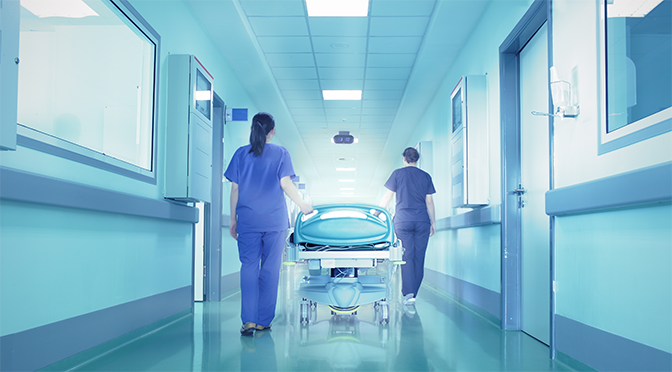The change in hospital lighting technology —from incandescent to LED lights— results in several questions on the trending technology.
Are you unsure about the general hospital lighting or LED usage in hospitals? This article will enable you find the most familiar questions and their answers.
- What Is Hospital Lighting?
Hospital lighting is the illuminate of healthcare buildings to accomplish various treatment effects. Examples of treatment missions are patient rehabilitation, surgery, strengthening doctor-patient relationships, and controlling security.
- Why Is Lighting Important in Hospitals?
Lighting reduces patients’ length of stay, dementia, and depression. Research shows that appropriate lighting intensity and color can stimulate melatonin production, thereby boosting sleep in patients suffering from insomnia.
Lighting for hospitals and healthcare facilities reduces doctors’ stress and burnout perception during surgeries. Hospital guards need tunable light to maintain building security, especially at night.
- What Are the 4 Types of Lighting?
The four types of lighting are accent, ambient, decorative, and task.
Accent lighting helps illuminate arts and other artifacts. It is often directed towards a specific area of an accessory. Examples of accent lighting are recessed lights, floodlights, track lighting, and wall sconces.
Ambient lighting includes natural light, overhead fixtures, and pendants. It entails indirect lighting, which evenly illuminates your room.
Decorative lighting is used for instilling a desired mood in the room. For example, you may apply it to make a gigantic room feel less overwhelming. They are mainly used in chandeliers and lamps.
Task lighting, as the name suggests, is illumination meant to accomplish specific duties such as cooking, reading, or applying makeup.
Among the four lighting types, ambient and decorative are the most applicable in hospital lighting.
- What Kind of Lighting Is Used in Hospitals?
Modern hospitals use warm, human-centric LED lighting. The few hospitals that still use incandescent lights plan to abandon it to focus on LED lighting due to a chunk of LED lighting benefits.
- What Are the Requirements for a Hospital Health Care Lighting Installation?
There can several hospital lighting requirements depending on your jurisdiction. The most familiar rules require the light to be conducive to core parties in the hospital.
For instance, hospital lighting should be able to meet patient comfort. The nurses and doctors should find it conducive to accomplish daily tasks without health or emotional drawbacks.
- Why Do Hospitals Have Blue Lights?
Hospitals use blue lights to regulate sleep. For instance, blue light is crucial in keeping patients alert and awake during the day. That happens because high blue lights are known to reduce melatonin, the sleep-causing hormone.
Blue lights were found to reduce sleep at night, thereby negatively affecting patients. Currently, most hospitals use high-efficiency LED blue lights.
LED blue lights, by contrast, are easily converted to healthy light, which drastically reduces melatonin suppression.
As a result, the hospitals can enjoy the powers of LED lighting, such as energy-saving, while maintaining patients’ quality sleep.
- Do Hospitals Use UVC Light?
Yes, hospitals use UVC to alter pathogens’ DNA structure. That helps to eliminate them and their harmful effects on patients.
- Do UV Sanitizers Work?
Yes. New research shows that UV kills more than 97.9% of pathogens.
- How Does Light Affect Human Health?
Light affects human health positively or negatively depending on color, type, and intensity. For example, too harsh blue incandescent lights lower sleep.
LED lights minimize the visual and auditory challenges of transcendent lights. Appropriate LED lighting improves security, disinfects pathogens, and propels melatonin creation.
- Why Are Emergency Lights Provided in a Hospital?
Emergency lights are provided in a hospital to ease the patients’, doctors’ (and nurses’), and visitors’ motion to safety.
The introduction of smart lighting in hospitals ensures the occupants are safe, while continuing certain essential services during an emergency.
Conclusion
Understanding the most familiar questions about lighting in hospitals is a recommendable milestone towards understanding lighting alterations due to changing technology.













